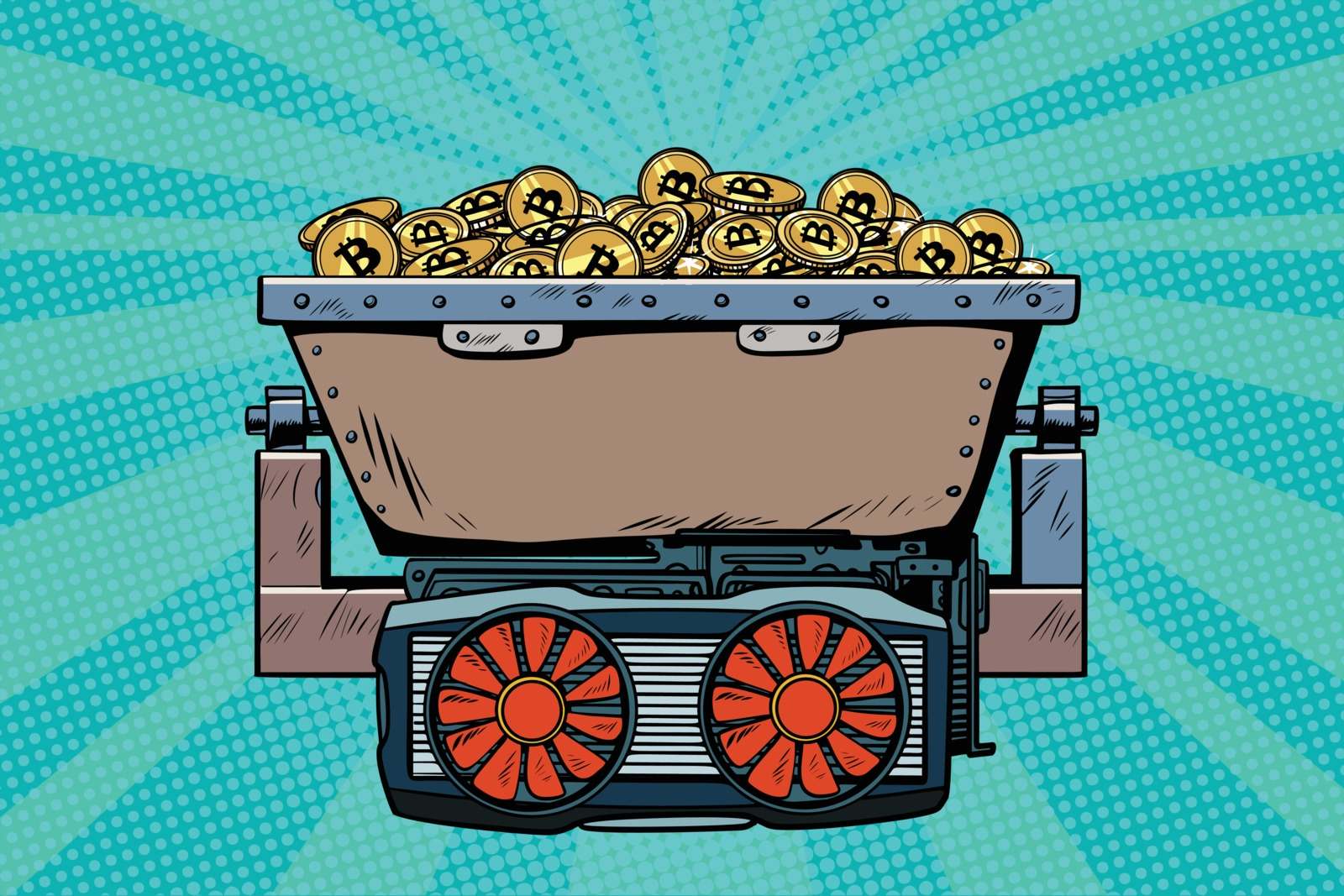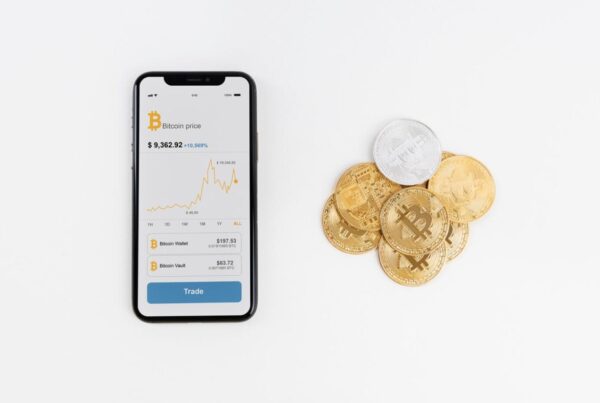How many Bitcoins are there in the world right now? That’s a question that a lot of people have been asking lately. The value of Bitcoin has been increasing at an unprecedented rate, and many people are curious about how much cryptocurrency is out there.
Something worth noting is that the value of Bitcoin is not tied to any physical asset, like gold or silver. Instead, the price of Bitcoin is determined by supply and demand. So, how many Bitcoins are there in the world right now? How many Bitcoins are left to mine? How many Bitcoins are there in circulation? These are some of the questions we will try to answer in this blog post. Read on!
But First, How Much is Bitcoin Worth?
Bitcoin was first introduced to the world in 2009 by an anonymous person or group of people known as Satoshi Nakamoto. At the time, a single Bitcoin was worth less than a penny. However, the value of Bitcoin has been extremely volatile over the past few years. As of 31 January 2023 Bitcoin is trading at $23,130.94 in term of its USD rate.
So, How Many Bitcoins are there?
Today, there are 18,925,137 Bitcoins in circulation. This number is constantly changing, as new Bitcoins are mined and added to the supply, and old Bitcoins are lost or destroyed.
With almost 19 million Bitcoins in circulation, it means that this asset is starting to become scarce. This is one of the reasons why the value of Bitcoin has been increasing so rapidly in recent years.
How Many People Use Bitcoin?
This question is a little harder to answer. There is no central authority that tracks Bitcoin usage, so different sources will give you different numbers.
However, by August 2021, over 79 million people had created Bitcoin wallets on Bitcoin.com alone. This was reported as a 31% increase from 2020. Also, this number had increased by 58 million compared to the number of Bitcoin users in 2018.
According to data released by New York Digital Investment Group in 2021, over 22% of adults in the United States (About 46 million people) have used Bitcoin. This number is expected to grow in the coming years as awareness of and access to cryptocurrencies increases.
We can also get an idea of the number of Bitcoin users in the world by looking at the number of Bitcoin wallets available. Bitcoin.com alone has 79 million users, while Coinbase – another major Bitcoin wallet has over 73 million users. cumulatively, these two wallets have over 150 million wallets.
With the existence of other major wallets and the emergence of other secure and reliable Bitcoin wallets such as Tezro, Jaxx Liberty Blockchain Wallet, and Exodus, it can be assumed that the number of Bitcoin users is much higher than what’s been reported.
How many Bitcoins are left to mine?
This is one of the overarching questions in the Bitcoin world. At the current rate of production, there will only ever be a total of 21 million Bitcoins, 20,999,999,9769 to be precise. This means that once all of the Bitcoins have been mined, no new ones can enter into circulation.
Once the 21 millionth Bitcoin is mined, the miners will stop getting rewarded with new Bitcoins. At that point, transaction fees will become the primary means of incentivizing miners to keep their nodes operational.
With the current 18.9 million Bitcoins in circulation, it means that only 2.1 million Bitcoins are left to mine. It is estimated that the last Bitcoin will be mined in 2140.
Why do These Limits Exist?
Well, to understand that, we need to first take a look at how Bitcoin works. Unlike gold or silver, Bitcoins are not physical commodities. There is no finite amount of Bitcoins that can be dug out of the ground.
Bitcoin is a digital asset that is created through a process called mining. Miners are rewarded with new Bitcoins for verifying and committing transactions to the Blockchain.
The finite amount of Bitcoins in circulation is a result of the way Bitcoin was designed. Satoshi Nakamoto, the creator of Bitcoin, wanted to create a currency that could not be manipulated by governments or financial institutions. By limiting the number of Bitcoins that could ever be mined, he ensured that this would never happen.
Some people believe that the 21 million limit was put in place by Satoshi Nakamoto to mimic the scarcity of gold or silver.
Others believe that this limit was necessary to prevent attacks on the Bitcoin network. By limiting the number of Bitcoins that could be in circulation, it makes it harder for someone to try and attack the network.
Limits on the number of Bitcoins in circulation also help to ensure that Bitcoin remains a deflationary currency. This means that over time, the value of a Bitcoin will increase as demand for it increases. Also, it means that people will be less likely to spend their Bitcoins, as they know that the value of these coins is only going to increase over time.
How Many Bitcoins Have Been Lost?
This is another difficult question to answer, as there is no central record of all Bitcoin transactions.
However, we can get a general idea of how many Bitcoins have been lost by looking at the number of unspent outputs on the Blockchain. As of July 2019, there were about 560,000 unspent outputs on the Bitcoin Blockchain. This means that out of the total 21 million Bitcoins that will ever be in circulation, about 0.027% have been lost forever.
While this may not seem like a lot, it’s important to remember that these are only estimates. The actual number of Bitcoins that have been lost could be much higher or lower than what’s been reported.
It’s also worth noting that not all lost Bitcoins are gone forever. Many of them may have been misplaced or forgotten about, and could potentially be recovered in the future.
Experts estimate that about 20% of Bitcoins that are lost can be recovered. This is because most of them are lost because of lost private keys, rather than because the Bitcoins were actually destroyed or stolen. This means that there is still a good chance that some of the missing Bitcoins could be recovered in the future.
How Many Bitcoins Are Mined Per Day?
To understand how many Bitcoins are mined per day, let’s first look at how long it takes to mine one Bitcoin.
Look – you cannot just mine a Bitcoin out of thin air. You need a powerful computer and you will have to solve some complex mathematical problems too. That is what mining is all about. Click here to learn how to start mining Bitcoin.
You see, when someone wants to make a Bitcoin transaction, they first need to broadcast it over the network. Miners then verify the transaction by solving a complex mathematical problem. If the miner can successfully solve the problem, they are rewarded with new Bitcoins for their efforts.
Mines mine one block, with the reward set at 6.25BTC per block. Mining each block takes roughly 10 minutes. This means that it takes 10 minutes to mine one block and in turn, one Bitcoin.
However, before you rush to mine Bitcoins, you need to remember that there are a pool of miners who are trying to do the same thing. The more people who try to mine Bitcoins, the harder it becomes to actually solve the problem and earn the rewards.
To increase rewards, miners now join mining pools, where they combine their computational power to increase the chances of solving the problem and earning rewards. Once a block is mined, the rewards are then distributed among the pool members accordingly.
So, how many Bitcoins can be mined in a day? Well, only 144 blocks can be mined per day. Based on the fact that each block takes 10 minutes, it means that 900 BTC are available for rewards every day.
What Happens When All Bitcoins are Mined?
What happens when all the 21 million Bitcoins have been mined? Will we run out of Bitcoins? These are some of the questions that often come up when people talk about Bitcoin.
The answer to this question is no. Just because all the Bitcoins will have been mined doesn’t mean that they will be automatically available for use. The number of Bitcoins in circulation is determined by how many are being used and how many are lost. As long as people continue to use and lose Bitcoins, the number of Bitcoins in circulation will continue to increase.
When all the 21 million Bitcoins have been mined, it simply means that there won’t be any new ones coming into circulation. However, this won’t affect the number of Bitcoins that are already in circulation. So, even after all the Bitcoins have been mined, we will still have the same number of them.
This doesn’t however, mean that reaching this point will not have any consequences. Let’s look at how this will affect different stakeholders in the industry:
Miners:
Miners will still be able to earn rewards, but the rewards will come from transaction fees instead of new Bitcoins. This means that miners will need to keep their machines running in order to continue earning rewards.
When this happens, the miners will become more reliant on transaction fees and this could lead to an increase in transaction fees. This could be a problem for people who want to use Bitcoin for everyday transactions. Also, this could lead to other problems including:
- Miners will form cartels: This is one of the most feared consequences of this event. When all the Bitcoins have been mined, miners will no longer have any incentive to mine blocks and earn rewards. This could lead to the formation of cartels who will then be able to control the Bitcoin network. Also, this could lead to a decrease in the number of miners, which will make the network more vulnerable to attacks.
- Miners will move on to other coins: Another possible outcome is that the miners will move on to mining other coins. This could leave Bitcoin in a precarious position and could eventually lead to its demise.
- Miners will become irrelevant: As mentioned earlier, when all the Bitcoins have been mined, miners will no longer receive new Bitcoins as rewards for their efforts. This could lead to a situation where miners are no longer necessary for the functioning of the Bitcoin network.
Retail Investors and HODLers:
When all the Bitcoins have been mined, retail investors and HODLers take advantage of the fact that they are not subject to inflation. This could lead to an increase in the price of Bitcoins as people will start buying them as a store of value. Additionally, this could lead to an increase in the use of Bitcoins for everyday transactions.
Institutional Investors
Today, there is a significant rise in institutional investors entering the Bitcoin space. When all the Bitcoins have been mined, these investors will have a lot more buying power as they will no longer be subject to inflation. This could lead to an increase in the price of Bitcoins and could also lead to increased adoption by businesses. Ultimately, this could lead to the mainstream adoption of Bitcoin.
Governments
For years, Bitcoin has proven to be a double-edged sword for governments. While some governments have been able to embrace it, others have been more reluctant.
When all the Bitcoins have been mined, governments will have no control over the Bitcoin network. This could lead to a situation where they are forced to accept it, or risk being left behind. They will try to regulate it through legislation, but this could be more difficult than it is today.
Most governments will be forced to take the middle ground. This means that they might not fully embrace Bitcoin, but they will also not try to prohibit it.
Cryptocurrency Exchanges
Cryptocurrency exchanges are a vital part of the Bitcoin ecosystem. They allow people to buy and sell Bitcoins, as well as other cryptocurrencies.
When all the Bitcoins have been mined, cryptocurrency exchanges will still be necessary for two reasons:
To convert Bitcoins into other cryptocurrencies: There are many different cryptocurrencies in the world and not everyone wants to own Bitcoins. Cryptocurrency exchanges will allow people to exchange their Bitcoins for other cryptocurrencies. This could lead to an increase in the use of other cryptocurrencies.
To trade goods and services: Another thing that cryptocurrency exchanges will be used for is trading goods and services. This could lead to an increase in the number of businesses that accept Bitcoin as payment.
Wallets
Wallets that store a significant number of Bitcoins could see their value increase when all the Bitcoins have been mined. This is because people will start looking for storage options that are not subject to inflation. Also, as the use of Bitcoins for everyday transactions increases, the need for wallets that can store a large number of Bitcoins will also increase.
The Future of Bitcoin
When all the Bitcoins have been mined, the future of Bitcoin is still uncertain. However, there are many things that could happen. Here are some possible scenarios:
- Scenario #01-Miners Will Move on to Other Coins: As mentioned earlier, when all the Bitcoins have been mined, miners will no longer receive new Bitcoins as rewards for their efforts. This could lead to a situation where miners are no longer necessary for the functioning of the Bitcoin network. They might move on to mining other coins, which could leave Bitcoin in a precarious position.
- Scenario #02-Bitcoin Will Become a Store of Value: Another possibility is that Bitcoin will become a store of value, much like gold. People will start buying Bitcoins as a way to protect their money from inflation. This could lead to an increase in the price of Bitcoins and could also lead to increased adoption by businesses. Ultimately, this could lead to the mainstream adoption of Bitcoin.
- Scenario #03-Governments Will Embrace Bitcoin: A third scenario is that governments will eventually embrace Bitcoin. They might not be able to control it, but they will realize that it is here to stay. This scenario could lead to more regulation, but it could also lead to increased use of Bitcoins for everyday transactions.
- Scenario #04-Bitcoin will Die (THOUGH HIGHLY UNLIKELY): The final scenario is that Bitcoin will die. This could happen for a number of reasons, but the most likely reason is that it will not be able to compete with other cryptocurrencies. If this happens, then all the Bitcoins that have been mined will be worthless.
While it is impossible to know for sure what will happen, we think that Scenario #02 is the most likely. Bitcoin will become a store of value and people will start using it as a way to protect their money from inflation.
This scenario could lead to increased adoption by businesses and mainstream adoption by regular people.
Key Takeaways
- It is estimated that the last Bitcoin will be mined in 2140
- There are 18.9 million Bitcoins in circulation
- At the current rate of production, there will only ever be a total of 21 million Bitcoins.
- Only 144 blocks can be mined per day.
- It is unclear what will happen once all Bitcoins have been mined.
Conclusion
Now that we have answered the question of how many Bitcoins are there in the world right now, you probably have an idea of what will happen when they are all mined.
While the future of Bitcoin is uncertain, it is evident that this asset has a lot of potential. We will continue to watch it and see how things play out.
Remember, that you should download Tezro to trade Bitcoin safely. Click here to find out how.












